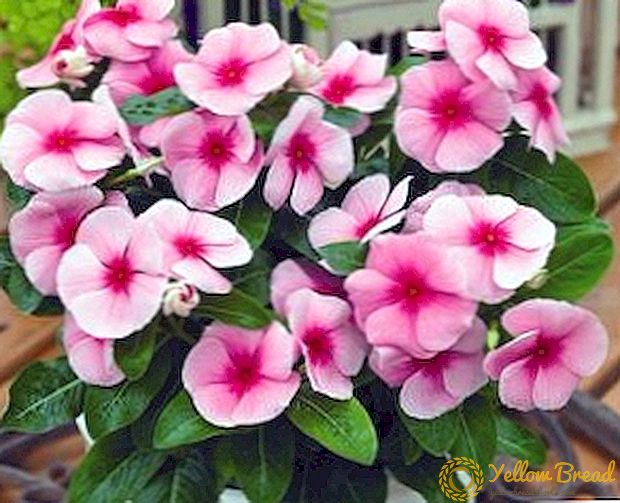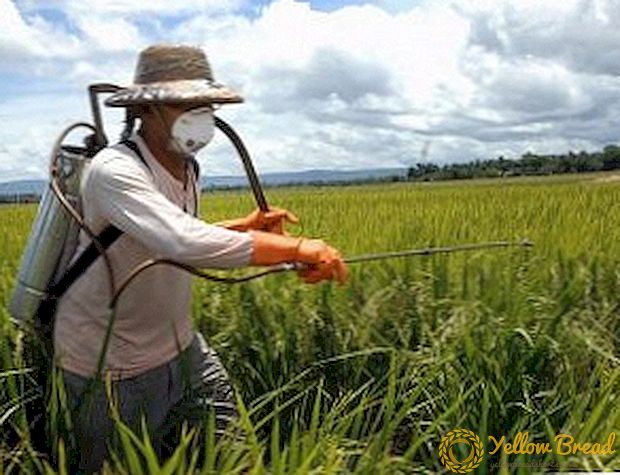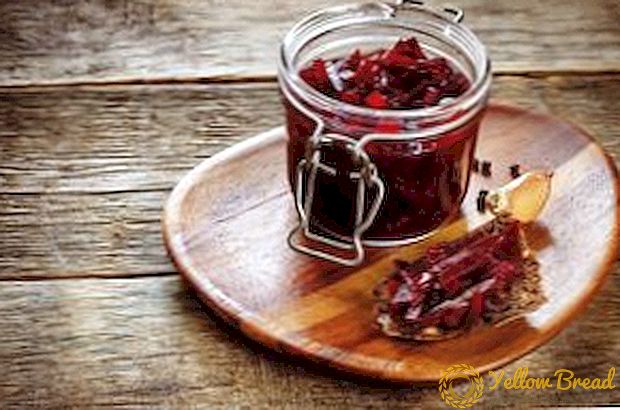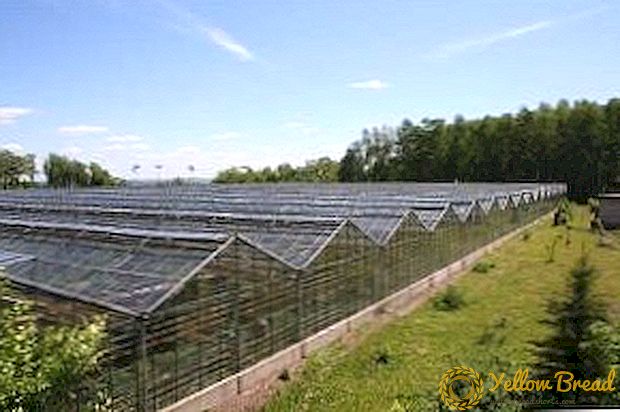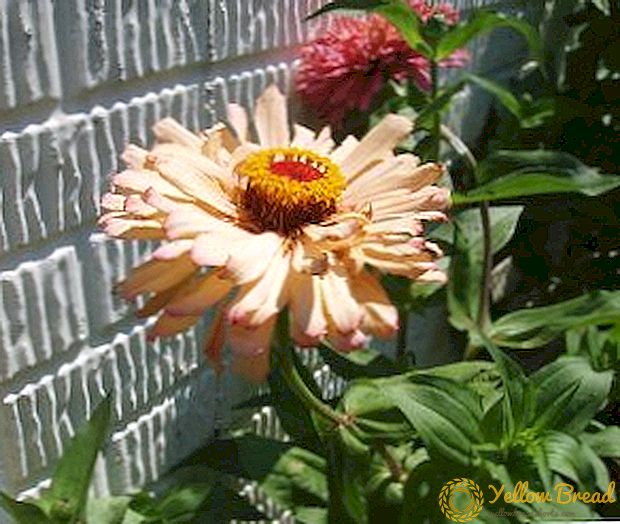 Sweet cherry is a natural multivitamin complex, which contains all the necessary substances and important nutrient compounds. Many of us enjoy this berry with special pleasure, as the fruits are not only healthy, but also incredibly tasty. Modern selection gave the opportunity to grow cherries in both southern and temperate latitudes, which is quite successfully provided by the variety "Pink Pearl". This persistent and highly productive variety of berries has proven itself at home and loved by many. However, in order to get a bountiful harvest, it is necessary to create the most favorable conditions for the plant, which is achieved solely through knowledge of all the botanical features of the plant. That is what we have to find out today, as well as find out all the advantages and disadvantages of the Pink Pearl cherry with a detailed description of the variety and its various pollinators.
Sweet cherry is a natural multivitamin complex, which contains all the necessary substances and important nutrient compounds. Many of us enjoy this berry with special pleasure, as the fruits are not only healthy, but also incredibly tasty. Modern selection gave the opportunity to grow cherries in both southern and temperate latitudes, which is quite successfully provided by the variety "Pink Pearl". This persistent and highly productive variety of berries has proven itself at home and loved by many. However, in order to get a bountiful harvest, it is necessary to create the most favorable conditions for the plant, which is achieved solely through knowledge of all the botanical features of the plant. That is what we have to find out today, as well as find out all the advantages and disadvantages of the Pink Pearl cherry with a detailed description of the variety and its various pollinators.
- Selection
- Tree description
- Fruit Description
- Pollination
- Fruiting
- Flowering period
- Gestation period
- Yield
- Transportability
- Resistance to environmental conditions and diseases
- Drought tolerance
- Winter hardiness
- Use of fruits
- Advantages and disadvantages
- pros
- Minuses
Selection
The high-yielding variety of fruit cherry called "Pink Pearl" is a product of domestic selection. The plant was bred in the All-Russian Research Institute of Horticulture named after I. Michurin thanks to Morozova T.V. To create a variety was used seed varieties "Leningrad yellow." Under laboratory conditions, the most viable seedlings were treated with special chemical mutagens. As a result of the impact on the plant organism, a new fruit plant was obtained, which, some time later, already in 1995, was sent for a variety trial.
Tree description
Signs of plants resistant. An adult tree is medium in size, with strong growth. The crown is formed in a regular round shape, but often in the process of vital activity it changes to a raised, round-oval.The shoots are mostly straight, regular, with no extra formations or thickening of the bark, and their color is mostly gray or gray-green. On the trunk, the bark is mainly scaly, of dark brown shades.

Fruit Description
Fruits of a variety are rather colorful, more often - medium in size, but in favorable years they can differ in appreciable size. The average weight of one unit is about 6 g. The shape of the berry is round, with a noticeable dimple at the base and a rounded top, and their color is characteristic orange shades, with an elegant, bright red tan. Abdominal suture for berries is not typical. The flesh is juicy and medium in density, yellow or orange. The juice is light, slightly reddish in color. The color of the cavity with a longitudinal size of solid. The stone of the correct spherical shape, small, is separated from the pulp without much difficulty. According to the taste characteristics of the fruit are pleasant, they are characterized by a noticeable sweetness.
Pollination
Sweet cherry variety is self-explosive: this means that additional pollination of the pollinator variety is necessary for its pollination. For these purposes, use such varieties of cherries, such as: "Michurinka" or cherry "Michurinskaya late." The following varieties can also be used: "Adeline", "Ovstuzhenka", "Pleziya", "Rechitsa", etc.
Fruiting
The plant is a fast-growing species, and this means that after planting young cuttings, their fruiting begins rather quickly. In most cases, the first crops can be harvested 5-6 years after planting the cuttings.
Flowering period
Flowering in cherry begins in mid-May and lasts until early June.
Gestation period
The plant belongs to mid-season varieties, so the first technically ripe berries mostly expect by the second half of July.
Yield
The yield of "Pink Pearl" is quite high and regular. Indicator relative to one mature plant reaches about 13-18 kg, which is on average from 85 to 140 kg per 1 ha.
Transportability
The transportability of berries is average, so they are not recommended to be moved for long distances, otherwise, they almost completely lose their presentable appearance.
Resistance to environmental conditions and diseases
Sweet cherry is quite resistant to adverse environmental conditions, especially to sharp drops in temperature. It is also worth noting its resistance to dangerous diseases, as the plant has a good resistance to fungal diseases of fruit species. This characteristic applies to the opposition to the causative agent of coccomycosis.
Drought tolerance
Long dry periods this fruit species tolerates excellent. In addition, severe dehydration and overheating of the plant body have virtually no effect on its fruiting and productivity.
Winter hardiness
Winter and early frosts sweet cherry "Pink Pearl" tolerates well, in addition, this quality extends to flower buds, which are able to withstand a sudden decrease in temperature regimes without much difficulty.
Use of fruits
The fruits of the "Pink Pearl" are used mainly for fresh consumption, as the berry has shown itself rather well with respect to its taste characteristics in its raw, unprocessed culinary methods. In addition, the sweet cherry is widely used for baking, stewed fruit and desserts. Also, thanks to excellent gelling abilities, the berry is the best raw material for preparing various jams, jams and similar foods.
Advantages and disadvantages
Despite the abundance of the above information about the plant, in conclusion, it is necessary to summarize all the positive and negative sides of the variety, which will help the gardener to make the most optimal choice regarding the need to cultivate this fruit tree in the summer cottage.
pros
"Pink Pearl" has a number of advantages relative to other representatives of this group of plants, for which the berry is so fond of many amateur gardeners and professionals. Among them are:
- high winter hardiness of flower buds;
- regular and high yield;
- drought resistance over a long period;
- excellent resistance to fungal diseases;
- excellent taste characteristics.
Minuses
Despite all the positive aspects, this sweet cherry has a number of negative aspects, among which it is possible to note: sterility with respect to pollination and low transportability.
 Sweet cherry "Pink pearl" is one of the most significant advantages of domestic selection. The plant shows itself perfectly as a technical and table fruitful appearance, in addition, its excellent taste qualities make it possible to obtain high-quality products from the berries.Despite some disadvantages of the variety, a number of advantages provide it with quite good popularity among fans of this fragrant berry.
Sweet cherry "Pink pearl" is one of the most significant advantages of domestic selection. The plant shows itself perfectly as a technical and table fruitful appearance, in addition, its excellent taste qualities make it possible to obtain high-quality products from the berries.Despite some disadvantages of the variety, a number of advantages provide it with quite good popularity among fans of this fragrant berry.

